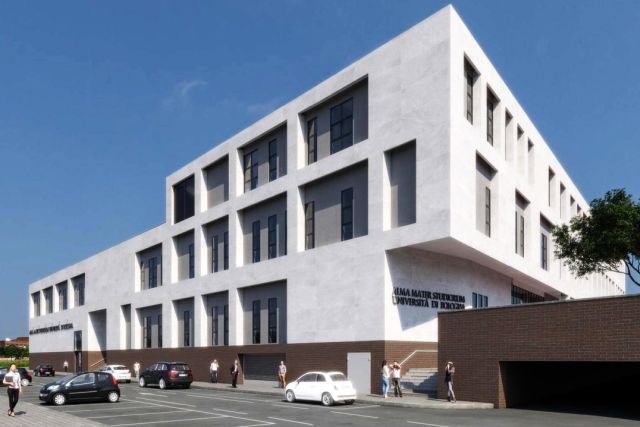An investment of around €385 million over three years for a programme that includes 104 works. The University of Bologna's Building Plan was unveiled today, setting out the University's development guidelines for the three-year period 2024-2026, including a focus on sustainability, rationalisation, new student accommodation and new teaching and research facilities.
Key actions include the completion of the ambitious plan to relocate the STEM (Science, Technology, Engineering and Mathematics) and Medical Departments, currently based in the university district, to new sites where they will have access to state-of-the-art laboratories and space for research and student training.
Another central theme is the consolidation of the University of Bologna's Multi-campus facilities. In Forlì, work is planned for the completion of the campus and the extension of the engineering area near the airport; in Cesena, the new headquarters of the Department of Psychology will be built; in Ravenna and Rimini, work is planned to optimise the use of teaching and research spaces, creating new study areas.
In terms of accommodation, six projects in the Building Plan will provide additional places for nearly 800 students. In Bologna, these include the new Lazzaretto site, the Battiferro student residence, the Nuovo Baricentro student residence and the San Giuseppe Sposo Sanctuary renovation, in addition to the student residence in the Osservanza complex in Imola and the student residence in the former ENAV buildings in Forlì, which is mostly already in use.
This major effort by the University of Bologna, driven by the need to renovate and expand the University's premises, is being carried out in a context of widespread difficulties in the building sector. This is linked to the sharp rise in the prices of raw materials and components, the increase in energy costs and the competition of incentive mechanisms dedicated to the private sector, which have reduced the interest of companies in building sites managed by public administrations. In this context, recent years has seen a sharp increase in the economic framework of all planned interventions and a difficult management of construction sites with an increase in the number of unsuccessful tenders.
The University has refinanced construction work by taking advantage of national, regional and NRRP funding opportunities, also in synergy with administrations, foundations, support bodies and private entities. This will enable important works to be completed that have been delayed for years. These include the Biomedical Tower at the Policlinico Sant’Orsola hospital, the space in the Navile complex intended for the Department of Pharmacy and Biotechnology, the new home for the Department of Civil, Chemical, Environmental and Materials Engineering in the Lazzaretto district, and the new home for the Department of Psychology in Cesena. We will also focus on the refurbishment and energy efficiency of existing assets. This will include the restoration of the façades and porticoes in Via Zamboni to the renovation and recovery of the historical premises of the Chemistry Department, which will be used by the University's central administration, and of the Industrial Chemistry Department in Viale Risorgimento, which will house the Department of Computer Science and Engineering (DISI).

